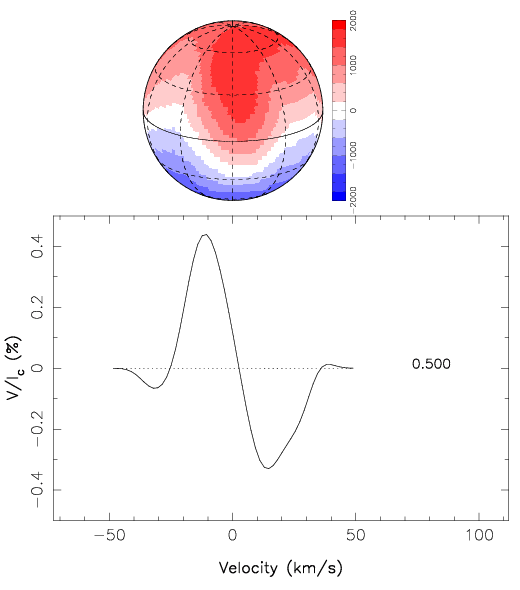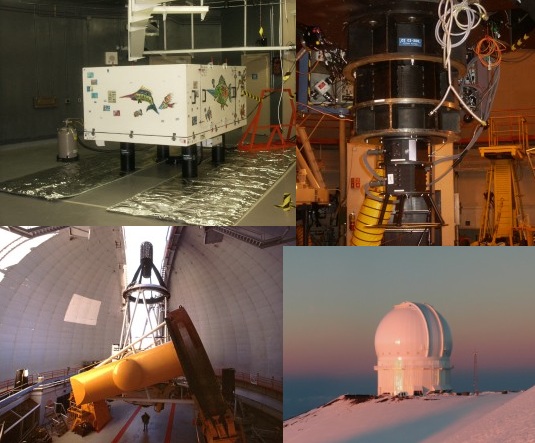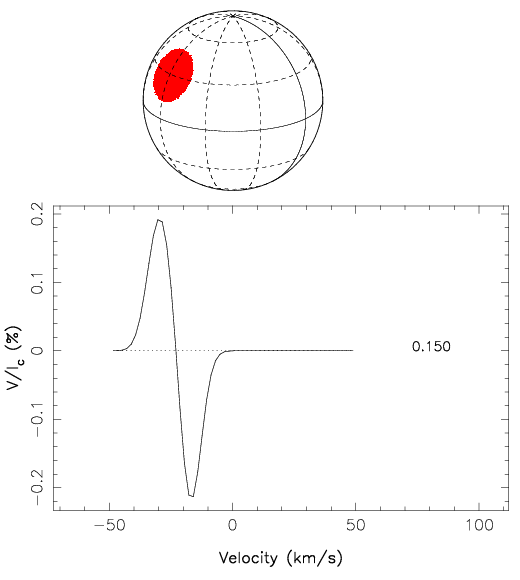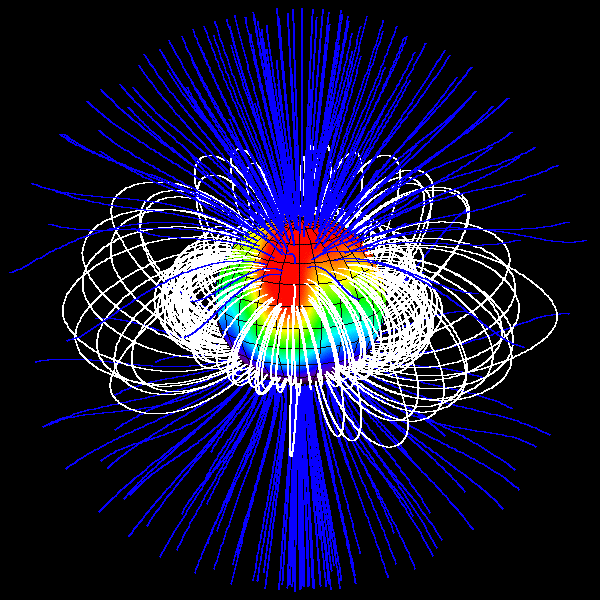The simple magnetic field of an ultra-cool star
An international team of astrophysicists[1]
has made the first magnetic map of an ultra-cool star
using ESPaDOnS[2], the new
spectropolarimeter recently installed on the Canada-France-Hawaii
Telescope[3].
The highly-organised magnetic field found by the team
on this small, cool star (more than 100 times too faint to see with
the unaided eye) presents an
unexpected challenge to our understanding of
how stars, including the
Sun, generate their magnetic fields.
Studying magnetic fields of stars is a novel way of studying the magnetic
field of our Sun, and to predict its potential impact on the Earth.
These results are published in 3 February 2006 issue of Science.
Although it looks always the same, the Sun is variable in time. Since Galileo, we know that dark spots come and go on its surface. The Sun also triggers changes of its luminosity, which, although small, are nevertheless able to affect the Earth climate. For instance, scientists think that a decrease in the luminosity of the Sun is the probable cause of the Little Ice Age, the cool period that prevailed on Earth from the 15th to the 18th centuries. These changes of the Sun are attributed to secular modifications of the magnetic field that the Sun produces in its interior through a mechanism which is not yet fully deciphered. |
 |
Magnetic loops at the surface of the Sun, as seen with the TRACE solar spacecraft. (©TRACE operation team, Lockheed Martin) |
It is widely believed that the Sun's magnetic field is generated and maintained by a physical process operating inside the Sun, called magnetic dynamo. The magnetic dynamo involves two main ingredients. The first ingredient is the large-scale cellular motions (convection) operating in the outer layers of the Sun's interior (called the convection zone) to evacuate the energy produced by the Sun in its core. The second ingredient is differential rotation, describing how rotation varies with latitudes and depths throughout the convective zone. The contribution of both ingredients produces a large-scale magnetic field that oscillates with time, on a period of about 22 yr. Modern theories of the solar magnetic dynamo speculate that the Sun's magnetic field is mostly produced within the thin interface layer between the outer convective zone and the inner solar regions; there are however many aspects of the solar dynamo that the current models cannot reproduce. |
 |
Internal structure of the Sun. Going from the inner to the outer regions, one can successively see, in this cutaway image, the radiative core (where the energy of the Sun is produced), the radiative zone (that radiates the core energy outwards through photons), the convective zone (that evacuates the energy outwards through cellular motions, like boiling water in a heated pan) and the surface (where dark spots are seen). A thin interface layer is present between the radiative zone and the convective zone, and is thought to be where the magnetic field of the Sun is produced. (©David Hathaway, NASA) |
V374 Pegasi is an ultra-cool star, with a surface temperature of only 2900 C, in
contrast to the Sun's 5500 C. Its mass and radius are less than one-third the mass
and radius of the Sun. Such stars are believed to host turbulent convection patterns
extending all the way from their surfaces to their centres.
|
 |
This plot shows the distribution of magnetic field reconstructed at the surface of V374 Peg (phase 0.5, upper panel) with Doppler imaging techniques; the lower panel illustrates the line profile corresponding to this distribution and rotation phase. Click on the image to see an animation (1.5 Mb) of how the line profile evolves as the star rotates. The magnetic image was derived from the observations of how the line profile evolves as the star rotates. (©JF Donati) |
This discovery was made possible thanks to ESPaDOnS[2], the new instrument built by the Laboratoire d'Astrophysique de Toulouse-Tarbes (Observatoire Midi-Pyrenees, France) and recently installed on the Canada-France-Hawaii Telescope[3] atop the big island of Hawaii. This instrument, especially designed for observing and studying magnetic fields in stars other than the Sun, is the most powerful instrument worldwide for carrying out this kind of research. In particular, ESPaDOnS is the only instrument that can study magnetic field topologies of small, faint stars such as V374 Peg, that are notoriously difficult to observe in detail. A copy of ESPaDOnS, nicknamed NARVAL[4], will be implemented very soon on the 2m Bernard Lyot Telescope atop Pic du Midi in France. An industrial partnership is being studied for building additional copies. |
 |
ESPaDOnS consists of two modules, a polarimeter mounted at the telescope focus (top right), fibre-feeding a bench-mounted high-resolution spectrograph (top left). The Canada-France-Hawaii Telescope is located atop the Mauna Kea volcano, in the big island of Hawaii(©OMP, CFHT) |

